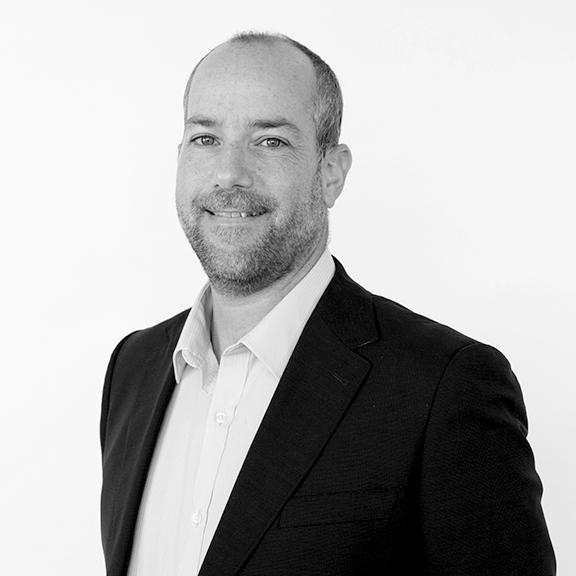It’s a dark and stormy night. Shadowy figures lurk furtively in corners as a hushed conversation filters ominously through the gloomy office. The muted exchange is halted by an eerie presence, a ghostly visitation shrouded in misconception and distrust. From the cold dark depths of this nightmarish apparition, only one sound can be heard:
In-housing.
The words alone are enough to leave your mouth dry and send a supernatural chill down your spine. Once guaranteed to demonstrate progressive industry know-how at any decent social, this buzzword now lurks nervously in the shadows of the night. Shrouded in superstition and ominous foreboding it continues to cast a clandestine shadow that haunts the digital marketing industry and can quickly clear a room.
A door slowly creaks open as a silent figure emerges. Ready to address this marketing demon once and for all is Bench’s resident ghostbuster, Anthony Fargeot.
Anthony, thank goodness you’re here, we are all terrified. Why has in-housing become such a taboo industry topic over the last few years?
Alas, it might help to think of it more as a ‘hot topic’ and why that is, rather than taboo. The term ‘in-housing’ has been thrown around a lot and may not be as ghastly as you think. An instigator was in 2016 when the AANA published a report suggesting a disconnect between clients and agencies, highlighting a lack of transparency in the industry. In-housing seemed to provide the immediate obvious solution, where in reality, it’s actually not that straight forward at all.
For some brands, the agency model might actually be the best way to drive the most value for their business, so then the process would naturally be around building a partnership with that agency and understanding the actual value they deliver to you.
So then is there true value to in-housing?
Of course, it is largely about having complete
control and
transparency. The definitions of this are subjective to each business. For example, it could be a report delivered in a specific way, or scheduled at a certain frequency for clear visibility on individual metrics. For others, transparency would be the ability to log in to DSPs and physically see the raw cost of media. Another instance is lifting the haze on big holding groups, ownership of the different tech stacks and having the ability to change providers.
If all contracts are held in-house, you make the decisions – and you make them with open eyes.
Sounds good. Should we all be in-housing?
For some advertisers, this is absolutely the right decision. Seeing this as a yes/no question however is a simplistic view and there are many other aspects to consider. Building your own stack and running all operations in-house is no easy feat – nor is it cheap. There is a level of expertise required in choosing suppliers, DSPs and ad platforms. There is also considerable pressure involved in managing these services in-house, and this is where agencies are specialists in the field; negotiating the best rates, understanding the marketplace and leveraging economies of scale. It’s a long-term investment that should be integrated in long-term business objectives.
What would be the first thing you need to assess as a business before you bring any services in-house?
Understand exactly why you want to do it. In-housing is a solution, not a problem
and just because there is a seemingly new and shiny opportunity out there, it doesn’t make it the right investment for your business. The first question should ask ‘what exactly needs resolving’. If you can identify problems like a lack of transparency, efficiency or control, it helps to take a step back and consider a range of solutions, where in-housing might be just one of them. It is then important to fully understand the cost implications of operating your digital spend both ways.
OK. I think it’s the right decision for my business – how do I get it right?
My favourite maxim is the ‘
leap of faith assumption’. Essentially it applied to lean start-ups and refers to an agile phase of transition. For each iteration, you would measure your predicted outcome against your actual in order to validate your ‘leap of faith assumption’. Once validated successfully, move on to the next step. You can equally apply this to in-housing. It doesn’t have to be an all or nothing movement because it really depends on the industry, the business, the resources at hand and the long term plans.
For agencies that want to in-house and set up a programmatic arm, you would firstly validate that your team can sell in the value of programmatic media to your existing clients. If that doesn’t work, go back to the drawing board to reassess that single element. Larger companies with more ad volume can usually justify in-housing,
but the real trick is to make it a gradual transition that uses a hybrid model before making a full switch.
What haunts businesses most when it comes to in-housing?
There are two main groups I would say are kept up at night. Those already transitioning may question the decision, as implementing such a large-scale change and being responsible for the success of the initiative are two very real and scary prospects. And, those who have launched into it but have no valid reasoning or real understanding of what is involved, and they’re haunted by uncertainty and the repercussions of no real strategy.
Where does it go wrong?
Usually in thinking you can do it all in one go. It can be a huge waste of time, money and talent if not done right. Pair this with bad or biased advice and it’s the apocalypse of your business. Without the expertise on-hand, it is easy to get lost in all the complexity and moving parts. This is when your business is left in the lurch: elements which could have been planned and process driven are otherwise experienced as unexpected ghosts of a haunted in-house! All of this can leave you frozen due to indecision and feeling overwhelmed by too much information. Moving away from trusted sources and suppliers is like leaving home for the first time. But a hybrid model gives you the reassurance of trialling smaller bite size aspects of in-housing at a time.
What would be the biggest risks with in-housing?
The two biggest risks are losing money and decreasing performance; it can be incredibly frustrating and can halt projects midway through. It also adversely affects morale.
Just between us, as it is Halloween, are you at liberty to reveal the secret formula for effective in-housing?
I would love to say it’s that easy! In truth, it is hard to pull off effectively, but not impossible with proper guidance. You can however mitigate risks by unmasking those seemingly ghoulish surprises and elements early on in a process-driven approach. Plan to do it gradually so you’re not left in the dark, and always evaluate what success would look like for each step of the way and be lean in your transition. I always believe in an agile approach with the ability to step back and change methods if something doesn’t work. In-housing is a journey, not an end destination.
So there’s nothing to be scared of?
If you surround yourself with the right people and the right advice – absolutely not. But I definitely would not recommend trying it out on Halloween…
–
Want to know more about in-housing? Send your thoughts or questions to
[email protected].




